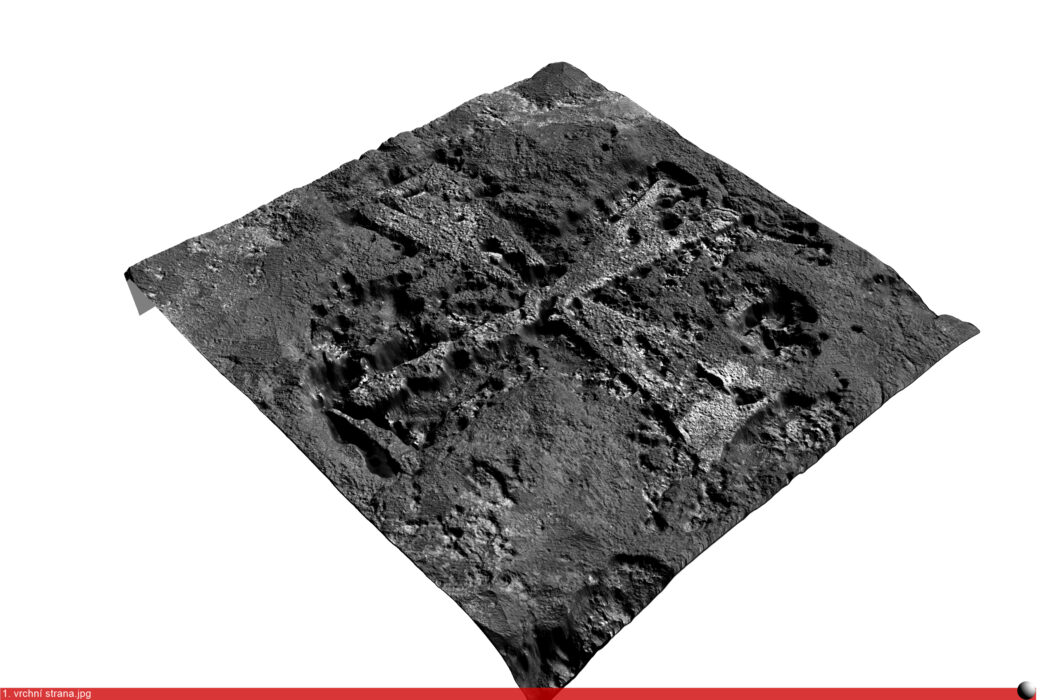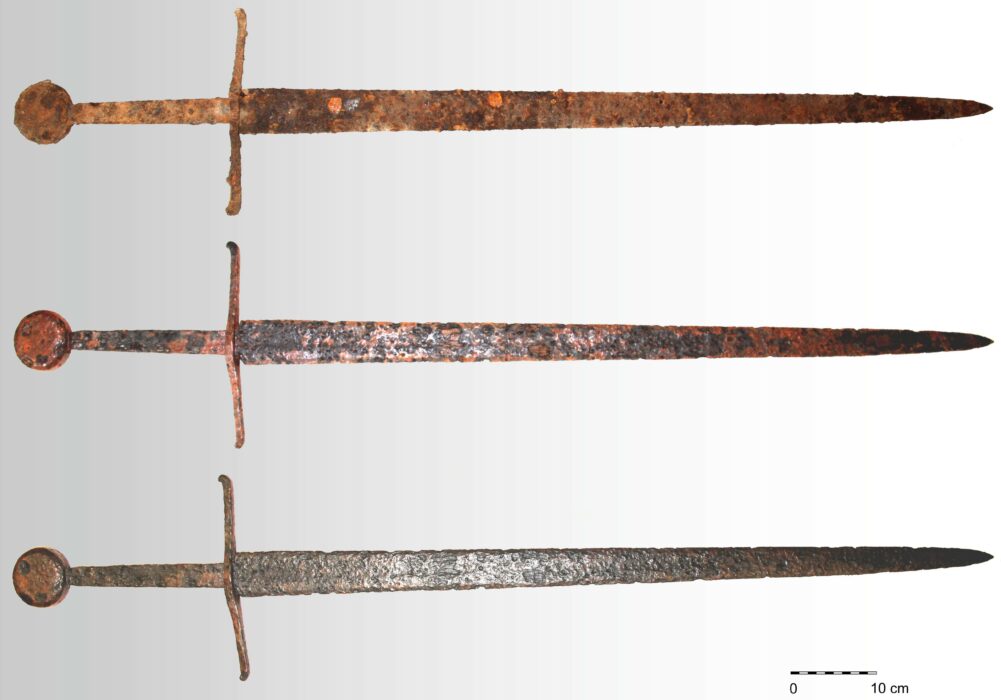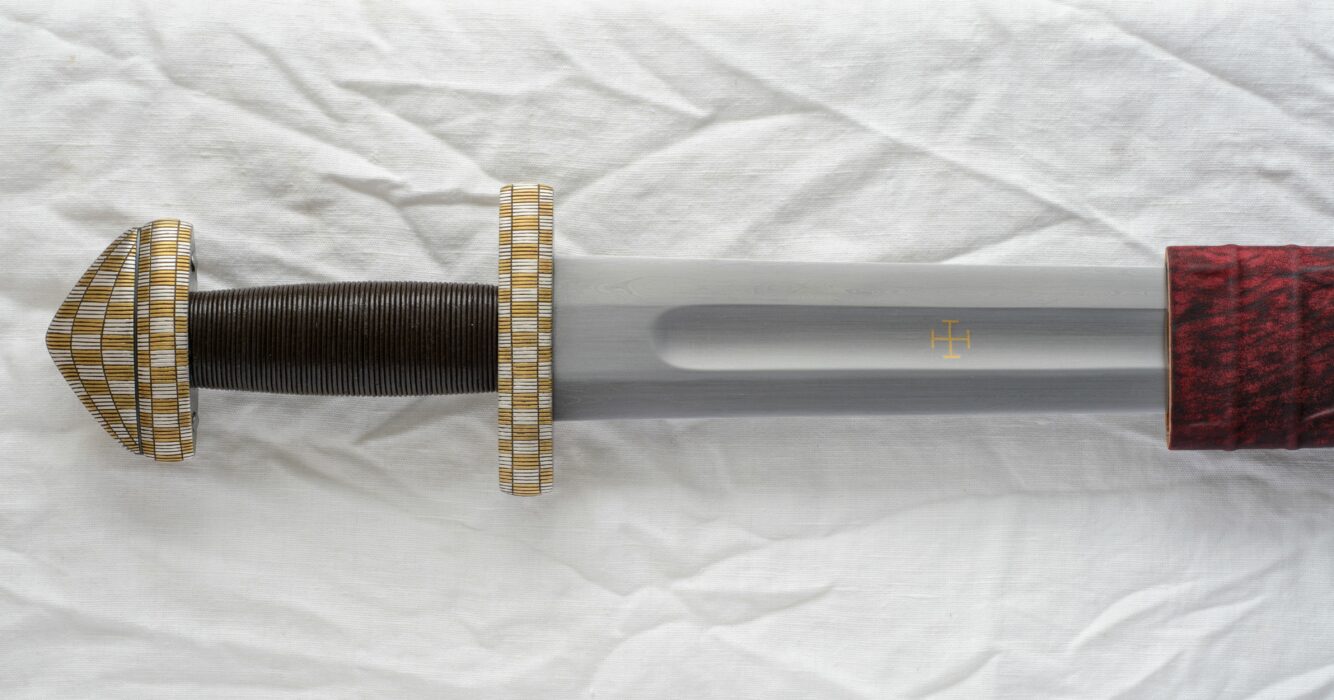One of the important missions and features of the Institute of Archaeology is to care for collection items – in our case, especially archaeological finds – and to strive to physically maintain them for future generations as part of the protection of our cultural heritage.
The task of ARÚB’s restoration-conservation laboratory is analytical conservation – the application of complex methods of rehabilitative and preventive conservation with the emphasis on the conservation of metal artefacts. We treat archaeological objects using the latest restoration-conservation methods.
Besides the conservation, aimed at slowing degradation processes and extending the lifetime of every object as much as possible, this modern approach to the protection of cultural heritage monuments also includes a detailed targeted analytic material and technology survey. We prefer non-destructive methods (microscopy, trace analysis, radiography, non-destructive and destructive element analysis, possibly metallography) for which the workplace is equipped with extensive instrumental equipment.
Microscopy and trace analysis
Microscopy and trace analysis make it possible to identify, examine and document the detailed morphology of artefacts and microscopic traces on the surface of objects. These include technological traces of production and processing, traces of wear, residues of organic materials, corrosion products, etc. We perform a detailed analysis of surface traces including a 3D model of the surface using an LMI ToolScan forensic trace analysis microscope. The Keyence VHX-5000 digital microscope enables rapid and detailed microscopic examination. For the standard application of microscopic methods, the workplace is equipped with a Nikon Eclipse LV100POL polarisation microscope and numerous stereo microscopes (e.g. Nikon SMZ1500 and Nikon SMZ745T).
X-ray survey
The purpose of an X-ray survey is to discover the material condition of archaeological finds or to identify remnants of decorative techniques hidden beneath layers of corrosion products and the inner structures of objects. This takes place before the restoration work begins and is performed using a compact stationary micro-X-ray machine or a portable ERESCO 160 MF-4R X-ray lamp in combination with a digital detector (40×40 cm). The maximum dimensions of the chamber are 145×50×44 cm; the area that can be scanned by the detector is 107×40 cm.
XRF elemental composition analysis
Non-destructive elemental composition analysis using the XRF (X-Ray fluorescence) method is conducted using both portable (pXRF) and stationary XRF spectrometers (ED-XRF). A Niton Xl3t 980 portable hand-held spectrometer can analyse elements ranging from aluminium to uranium directly at the archaeological site or in a laboratory for arbitrarily sized objects or samples in a portable stand. The ElvaX Pro desktop spectrometer offers more precise element analysis from sodium to uranium. In this case, the size of the analysed objects or samples is limited by the dimensions of the chamber (33.5×22.5×8.5 cm).
The instruments provide completely non-destructive surface measurement to determine the material of an alloy, identify various technological procedures (such as soldering) or surface finishes (hot gilding, tinning, damascening, etc.). Samples of the metallic core can be analysed when more precise results are required.
Results of analytical conservation
The summary result of the application of these analyses is a complex material and craft-technology assessment of the examined object, which often reveals important and unique information about the original production and decorative technologies. For selected artefacts that are of interest from the technological perspective, these conclusions are verified by experimental production of their most faithful reconstructions.
Another domain of analytical conservation is the analysis of archaeological finds taken in situ, especially assemblages of metal objects, artefacts of exceptional value, metal finds with organic residues, etc. This includes complete and detailed documentation before and during disassembly using conventional photography, 3D photogrammetry, radiography, CT, etc.
The standard output of conservation activity is the complex conservation reports and, for the most interesting artefacts, dedicated scientific studies.
At present, the workplace primarily focuses on the conservation and reconservation of the material deposited in the ARÚB collection. However, gradually and to an increasing extent, the workplace is also offering conservation and analytic services to other collection-forming institutions.





Our conservators and restorers
- Mgr. Petr Žákovský, Ph.D.
(head of the restoration-conservation laboratory) - Martin Fořt, DiS.
- Michal Chovanec, DiS.
- Mgr. Matěj Kmošek, DiS.
- Mgr. Patrick Bárta
- Bc. Čeněk Fouček
- Mgr. Filip Ševčík

